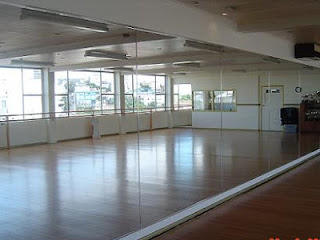“The
getting back up is so much more important than the getting knocked down.” –
David Dorfman on A Chance to Dance
 The school
year has started, dance classes are now in full swing, and dance schools have
begun to hold auditions for annual Nutcracker productions. Students crowd into studios vying for coveted
roles, knowing that there are many more parts for corps dancers than there are for
soloists. The auditions end, and the
dancers go home and wait to find out which role or roles they will be dancing
in this year’s production.
The school
year has started, dance classes are now in full swing, and dance schools have
begun to hold auditions for annual Nutcracker productions. Students crowd into studios vying for coveted
roles, knowing that there are many more parts for corps dancers than there are for
soloists. The auditions end, and the
dancers go home and wait to find out which role or roles they will be dancing
in this year’s production.
Some
students will be lucky and be given the roles they have pined for while others
will be disappointed, and in some cases devastated, to learn that they will be
dancing a corps part or a part they may have danced previously.
Dance
teaches much more than simply technique.
Dance teaches lessons of discipline, dedication, and responsibility, and
dance teaches that sometimes life is not fair.
It is difficult for students to imagine that sometimes roles are not
cast on the basis of talent or skill level.
Casting is quite often determined by available costumes, the number of
students auditioning, dancers’ heights, and the amount of time necessary for
costume changes. Selecting a cast for
large productions is often more a matter of logistics than skill levels.
When the
cast list is posted, there are going to be students who are disappointed. Disappointment exists in dance and in
life. As the students get older, there
will be bigger disappointments in their lives.
They will apply for scholarships that they do not receive, they will
apply to colleges that do not accept them, they will have friends that prove to
be disloyal, and there will be interviews or auditions for jobs they do not
get.
American
psychoanalyst, teacher, and scholar, Heinz Kohut, believed that disappointment
promotes growth because it motivates people to work harder and fight back. Those who always receive what they want and
hope for will be satisfied with the status quo and may not push themselves to
improve, while those who are disappointed tend to push themselves harder, reach
beyond previous boundaries, and grow as people.
As logical
and promising as that theory sounds, disappointment is still a very difficult
part of life for both dance students and their parents. A parent’s first reaction is to protect his
or her child and try to speak with the director in an effort to “fix” the
problem. Intervening will not help build
the child’s coping skills and will make the child believe that every
disappointment can be fixed.
It is
important for the student and his or her parents to acknowledge the disappointment
and talk about it. There will
undoubtedly be feelings of anger, sadness, and frustration, which are all
understandable. Experiencing these
feelings and working through them will help the students learn to cope with
disappointments and setbacks in the future and make them stronger
individuals. After dealing with the
initial feelings of disappointment, it is also important that the parent help
the child focus upon his or her strengths and refocus the child’s energy on
working toward future goals in dance.
Not being
cast in a coveted role is hard to accept, it is upsetting and frustrating, and
it hurts. However, standing back up,
continuing to take pride in one’s dancing and working harder than before is how
dancers grow and prepare themselves to be productive, mature adults who will
persevere in spite of life’s obstacles.






